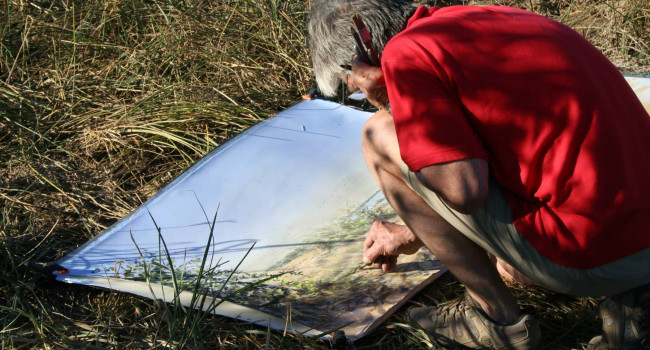
Migration blog (22nd – 28th October)
Scott’s role includes the day-to-day running of BirdTrack: updating the application, assisting county recorders by checking records and corresponding with observers.
Relates to projects
Many bird watchers have been lamenting on what a poor autumn it has been so far for migration, with numbers of common, scarce, and expected rare species down on what would normally be expected.
It has indeed been a poor autumn with many species being under reported compared to previous years – take for example Yellow-browed Warbler, a species many of us associate with autumn and one that many of us love to see. This year numbers have been well down on previous years with less than 1% of BirdTrack complete lists containing this gorgeous Siberian sprite. The figure should be more like 4-5% of lists based on recent years.
The past week, however, has seen some locations blessed with a fall of thrushes, mainly Redwing, Blackbird, and the occasional Ring Ouzel and Fieldfare. Almost 20,000 Redwing were seen at Ferryhill, Fife, Scotland on 18th October, and the Isle of May recorded almost 14,000 the day before. This arrival was unexpected given the prevailing weather but was most welcomed in what was otherwise a poor week. These birds arrived from Scandinavia and reports were widespread across much of Britain with a bias towards Scotland, the North East and some South Eastern counties. The lower number of Redwing reports from Ireland is a result of the Scandinavian race iliacus preferring to winter further east, with the Icelandic race coburni favouring Ireland and as yet these have not arrived in any great numbers.
Towards the middle of last week increasing numbers of finches began to arrive with Siskin, Redpoll, Chaffinch, and Brambling reports increasing, again somewhat of a surprise given the predominantly westerly winds.
The past week did provide a couple of rare species that were very much welcomed by those feeling hard done by with the autumn so far, both Taiga Flycatcher and Two-barred Warbler were found in East Yorkshire, at Flamborough and Spurn respectively and, whilst the Flycatcher was only a one day bird, the Warbler was still delighting admirers at the time of writing.

Species Focus — Hawfinch
During the breeding season the Hawfinch has to amongst one of our most elusive birds, but during the autumn months and into the winter they can become much more accessible.
It is estimated that our breeding population is around 500 pairs and is mostly found in the English deciduous forests.
During the autumn our breeding population is bolstered by immigration from Scandinavia but there is very little information as to how regular this is. In some years there may very little, or even no immigration, but in other years large numbers can arrive here. During the autumn of 2017 it was estimated that thousands of Hawfinches arrived in the UK with their arrival beginning in early October and continuing through to early November.
The oldest Hawfinch we know of in Britain and Ireland, from the BTO online ringing report stands at 10 years and 4 days, and the longest distance recorded for a ringed bird is of an adult female that was ringed at Meerane, Germany and found on Unst, Shetland, 1,378km from its ringing site.
Even if the winds aren't favourable for large scale movements of birds this time of year is still good for locating winter visitors.

Looking ahead
Several years ago the perception was that autumn migration was predominately over by the end of October, and it was then the time to seek out winter-visiting wildfowl, gulls, and raptors – but recently we have seen the autumn migration period extend well into November with a whole host of species that traditionally arrive later in the year. The timing and magnitude of their arrival is intrinsically linked to weather patterns and – you guessed it – the most productive are easterlies. This is not to say that nothing else will arrive on winds from other directions, it's just that easterlies tend to produce the lion's share of species.
Looking ahead the weather is set to be predominately producing west to southwesterly winds with a brief spell of southerlies over the weekend. These southerlies could produce a few late surprises such as Pallid Swift, Red-rumped Swallow, or maybe something from further south… White-crowned Wheatear anyone? With a switch to westerlies from early next week it is likely that any big arrival will be limited and due to the track of the systems coming across the Atlantic it looks unlikely they will provide many, if any late American vagrants, that said the odd Laughing or Ring-billed Gull, or Lesser Scaup might make it across. For much of the coming weeks the winds do look to be moderate to strong but any drop in wind speed could see Meadow Pipits, Skylarks, finches, and thrushes on the move, with early mornings best.
Any switch in the wind direction to either a northwesterly, which could result in more Pink-footed Geese, Whooper Swan, and Icelandic race Redwings arriving, or to easterlies, which could provide a late arrival of Yellow-browed Warblers, could include a few Pallas’, Hume’s or Dusky Warblers and, given the time of the year, a mega rare such as Siberian Accentor or Siberian Rubythroat – we can but dream. Perhaps one of those Pygmy Cormorants on the near continent will do the decent thing and make it to our shores.
Even if the winds aren't favourable for large scale movements of birds, this time of year is still good for locating winter visitors such as Water Pipit, Jack Snipe, Snow Bunting, Short-eared Owl, and Hen Harriers.








Share this page